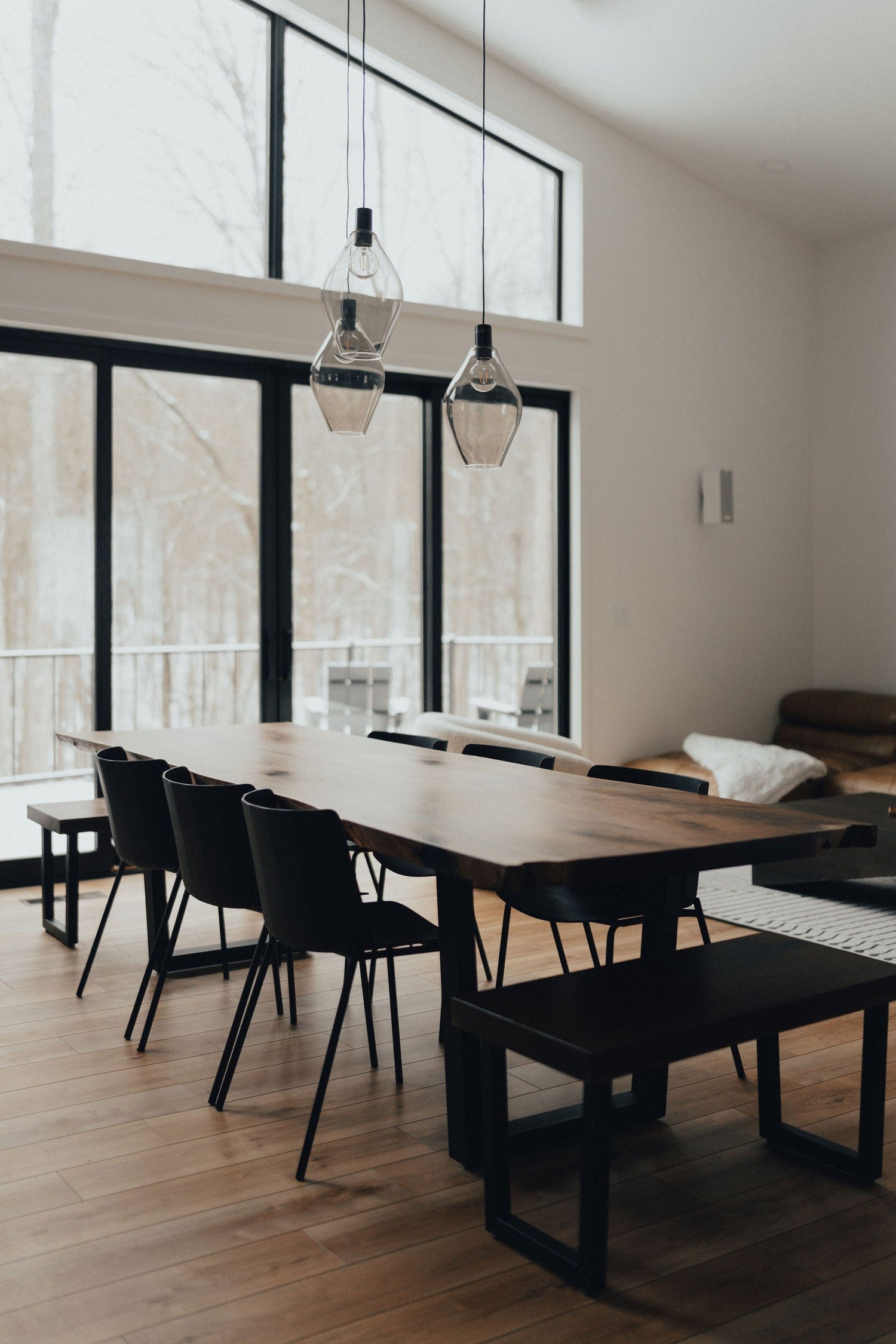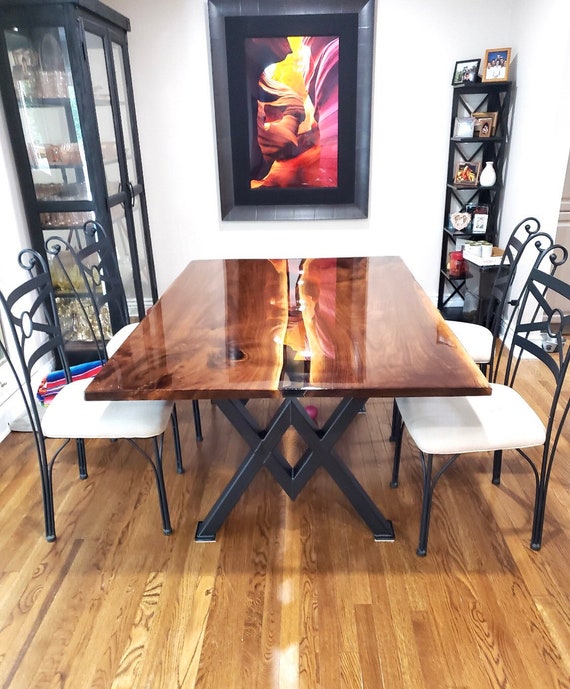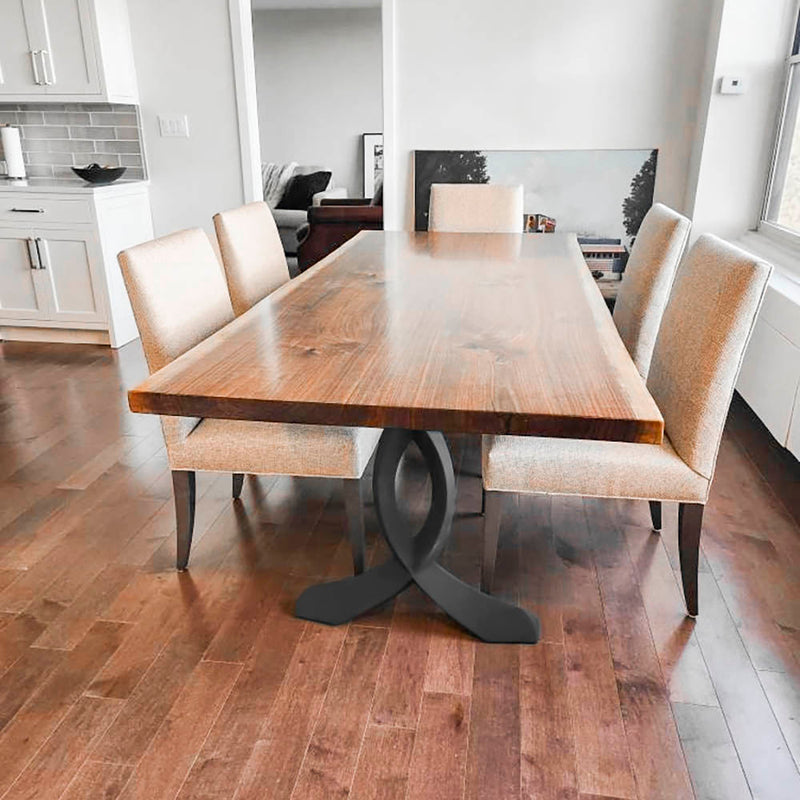Why Dining Room Table Legs Are Crucial for Your Table’s Stability
Why Dining Room Table Legs Are Crucial for Your Table’s Stability
Blog Article
Professional Tips for Setting Up Dining-room Table Legs for Optimum Security
When it pertains to setting up dining-room table legs, achieving optimum security is vital for both functionality and aesthetic appeals. The procedure begins with selecting the best materials and equipment, followed by meticulous placement and factor to consider of weight distribution. Each step plays an important duty in making sure that the finished product endures day-to-day use without jeopardizing security or style integrity. Comprehending the subtleties of these aspects can dramatically influence the general end result. What specific techniques can enhance stability also better?
Choose the Right Legs
When picking the proper legs for your dining-room table, it is necessary to consider both capability and looks. The legs you choose will substantially impact the general layout and security of the table. Examine the table's planned usage; if you anticipate frequent events, sturdier legs, such as those made from solid wood or metal, may be extra appropriate, as they use increased resilience and support.
Next, think about the elevation and style of the legs in relation to the tabletop. Basic table normally vary from 28 to 30 inches in elevation, so make sure the legs straighten with this requirement for comfort. The style of the legs need to complement the design of the tabletop-- whether it be modern-day, rustic, or typical. As an example, conical legs can add a contemporary touch, while turned legs may convey a much more traditional aesthetic.

Select Appropriate Hardware
Just how can the best equipment enhance the stability and longevity of your dining space table? The option of proper hardware is critical to making certain that the legs of your table are securely affixed and able to withstand routine usage. High-grade screws, screws, and braces provide the needed stamina to support the weight of the table, as well as any type of additional lots placed upon it during events or meals.
When picking screws, choose those made from durable materials such as stainless steel or brass, which stand up to corrosion and preserve stability gradually. The length of the screws is just as important; they should permeate deeply right into the table's structure without jeopardizing honesty. For bolted links, consider using lock washing machines to avoid loosening up because of resonance or activity.
Furthermore, making use of edge braces can add additional support, particularly for larger tables or those with larger tops. These brackets distribute weight equally and assist preserve the table's shape. Ensuring that the hardware you select is ideal for the particular materials of your table will better improve its overall stability and longevity, allowing you to appreciate your dining experience for several years ahead.
Ensure Appropriate Placement
Proper placement of dining room table legs is important for both visual appeal and practical stability. To accomplish ideal alignment, begin by measuring the distance from the table's edges to the leg attachment points.
Make use of a level throughout installment to validate that each leg is vertical to the tabletop. It is recommended to note the wanted leg placements on the underside of the table with a pencil or concealing tape before protecting them.
Additionally, ascertain the alignment after the initial screws are tightened, as adjustments might be my company essential prior to totally securing the hardware. By prioritizing appropriate positioning, you not only improve the table's total layout yet additionally make sure that it stays useful and stable for years to come.

Consider Weight Distribution
After guaranteeing proper positioning of the dining-room table legs, it is very important to take into consideration weight distribution to improve stability and functionality. dining room table legs. Proper weight distribution is essential in protecting against wobbling and guaranteeing that the table can Learn More support its intended lots without danger of tipping or collapsing
When placing the legs, ensure they are placed at equal ranges from the center of the table to equally distribute the weight across the structure. Take into consideration the weight of the tabletop and any kind of products that will often rest on it, such as tabletop appliances or attractive pieces. Tables with much heavier surface areas need to preferably have legs located closer to the corners, as this optimizes the base of support and minimizes the danger of instability.
In addition, if the table is meant for usage in a high-traffic area, think about using much heavier products for the legs or including supporting components, such as cross-bracing or a lower shelf - dining room table legs. These changes can aid maintain balance and protect against moving during use. Eventually, a well-considered weight distribution technique will considerably boost the table's general efficiency, ensuring it stays a useful and attractive focal point for your eating space
Test Security Prior To Usage
Checking the stability of the dining space table before use is an important action that needs to not be forgotten. If the table reveals instability, determine the legs or joints that might call for adjustment.
Following, inspect that all screws and fasteners are tightened properly. Loose links can lead to instability and prospective damage in time. If essential, use wood adhesive on joints to improve security, ensuring to permit ample drying time.

Verdict
To conclude, the installment of dining-room table legs needs mindful consideration of products, hardware, placement, and weight distribution to accomplish optimum stability. By selecting tough legs and high-quality fasteners, making sure specific alignment, and distributing link weight uniformly, the structural honesty of the table can be considerably improved. Carrying out a security test prior to routine usage even more ensures that the table will certainly hold up against day-to-day pressures, therefore offering a reliable and safe dining experience.
When it comes to setting up dining space table legs, accomplishing maximum security is critical for both performance and looks. The legs you pick will significantly affect the general style and stability of the table (dining room table legs). Basic dining tables commonly range from 28 to 30 inches in height, so guarantee the legs align with this standard for comfort.Proper placement of eating space table legs is essential for both aesthetic appeal and useful security.In final thought, the installation of dining area table legs calls for cautious consideration of materials, hardware, positioning, and weight distribution to achieve optimum security
Report this page